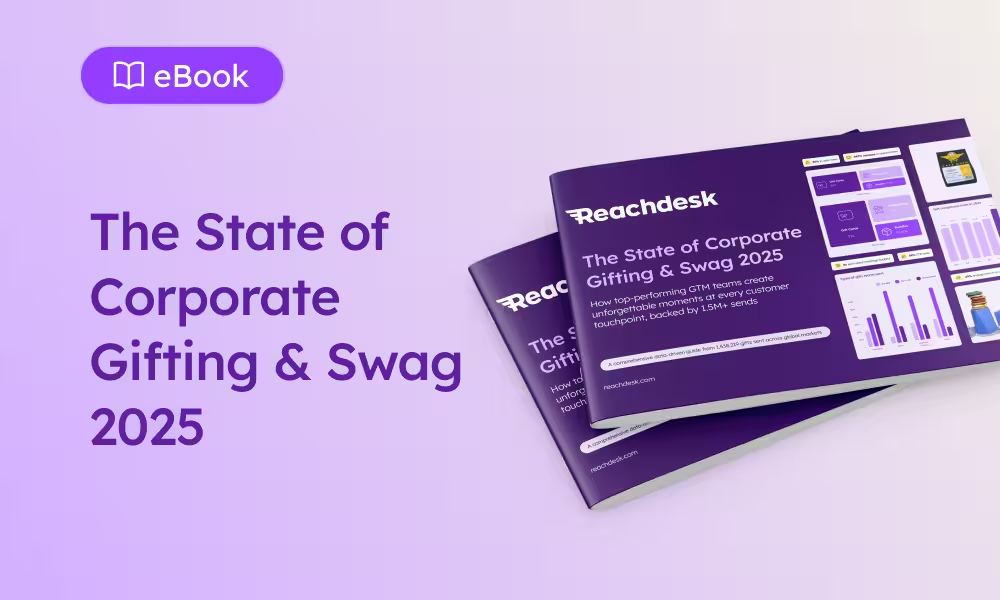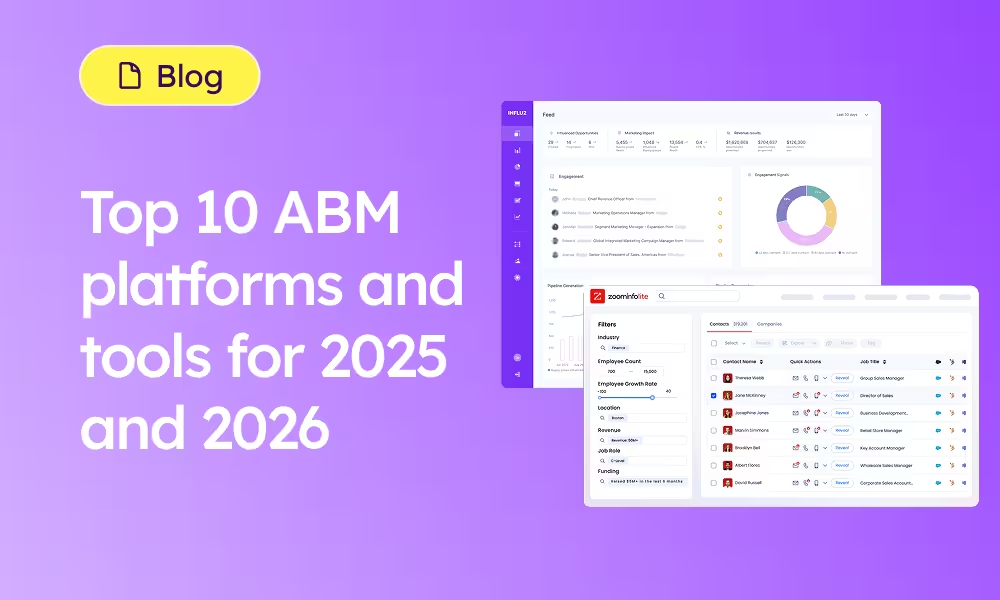One powerful platform for ROI-driven corporate gifting, swag, and engagement at scale.
Here's an uncomfortable truth: most B2B brands are forgettable.
Not because they're doing something wrong, exactly. They're running campaigns. Investing in content. Showing up on LinkedIn. But three months after a prospect visits their website or reads their email? Nothing. Radio silence in the memory banks.
Meanwhile, a handful of brands (you know the ones) seem to live rent-free in everyone's head. They're the first name that comes up in buying committee meetings. The company people want to work with, even before they've seen a demo.
What's the difference? It's not budget. It's not industry. It's brand strategy that goes beyond logo colors and taglines to create experiences people can't help but remember.
Why brand marketing is your most scalable GTM channel
Think about the last major purchase decision you made. Chances are, you didn't start from scratch. You already had a shortlist in your head: brands you'd heard of, seen in action, or had positive associations with. That's brand equity at work, and it's far more valuable than most marketing metrics let on.
The brand significantly influences the purchase decisions of 75% of B2B buyers. Strong brand strategy doesn't just support your go-to-market motions. It is a GTM motion. One that compounds over time instead of resetting with every campaign. In fact, maintaining a consistent brand presentation across all platforms can increase revenue by up to 23%.
Consider this: when your brand is memorable, your cold emails get warmer receptions. Your ads get higher click-through rates. Your sales cycles get shorter because trust is already established. Your customer marketing practically runs itself because people are already advocates.
That's the compounding effect of brand recognition. Every touchpoint builds on the last, creating momentum that paid ads and one-off campaigns simply can't match.
Building brand recognition: The 3 elements of memorable brands
Let's get specific. Memorable brands share three non-negotiable traits:
1. Brand consistency without being boring.
Your prospects see your brand across channels (email, events, social, their inbox) and it all feels like it came from the same place. Not because you're repeating yourself, but because there's a clear thread running through everything. The tone, the values, the way you show up: recognizable but never repetitive.
2. Emotional branding over transactional messaging.
People don't remember features. They remember how you made them feel. Did you make them laugh? Make their job easier? Show up at exactly the right moment with exactly the right solution? That's what sticks.
3. Real-world brand experiences.
Here's where most B2B brands stumble. Everything lives online: emails, webinars, Slack messages. But humans aren't built to form memories from pixels alone. The brands that truly stand out find ways to break through the screen and create tangible, physical moments.
How to build a brand strategy that accelerates your GTM performance
Brand consistency isn't about rigid guidelines. It's about creating a narrative that carries through every stage of the buyer journey, making each interaction feel intentional rather than random.
Here's how to put this into practice:
Step 1: Define your brand positioning and messaging framework
Before launching any brand campaign, get clear on three things:
1. Your brand promise. What do you deliver that no one else does? This isn't your product features. It's the outcome, the transformation, the reason people choose you over alternatives.
2. Your brand voice and tone. Are you the challenger brand? The trusted advisor? The innovative disruptor? Pick one and commit. Every piece of content, every campaign, every customer interaction should reflect this personality.
3. Your visual brand identity. Colors, fonts, imagery style. These should be documented and consistent. When someone sees your content in a crowded inbox or scrolling through LinkedIn, they should recognize it's you before reading a single word.
To get started, create a brand guidelines document. Include your brand promise, three voice characteristics, visual examples, and messaging do's and don'ts. Share it with everyone who creates customer-facing content.
Step 2: Map brand touchpoints across the customer journey
Strong brand management means showing up consistently at every stage. Map out where and how prospects encounter your brand:
- Awareness stage: Blog content, social media, paid ads, podcasts, event sponsorships. Your goal: create instant recognition and positive associations.
- Consideration stage: Webinars, case studies, comparison pages, sales conversations. Your goal: reinforce trust and demonstrate expertise.
- Decision stage: Product demos, proposal presentations, contract discussions. Your goal: make choosing you feel like the obvious, safe choice.
- Retention and advocacy stage: Onboarding, customer success touchpoints, community building, renewal conversations. Your goal: turn customers into vocal champions.
Audit your current touchpoints. Are they all recognizably from the same brand? Where are the gaps? Where does the experience feel disconnected? From here, you can start building a brand that is recognizable, and remembered.
Step 3: Create brand campaigns that drive demand generation
The best brand campaigns blend creativity with measurable outcomes. Here's how to design campaigns that generate both awareness and pipeline:
- Start with a clear objective. Are you launching a new product? Breaking into a new market? Re-engaging cold leads? Your campaign structure changes based on the goal.
- Build multi-channel brand activations. Don't rely on a single channel. The most effective brand campaigns coordinate across email, social, events, content, and direct outreach to create repeated exposure.
- Create assets that reinforce brand identity. Every piece of your campaign (landing pages, email templates, social graphics, event materials) should feel unmistakably like your brand.
- Include a call to action that moves people forward. Brand campaigns aren't just about awareness. Every touchpoint should invite the next step: book a demo, download a resource, attend an event, start a free trial.
Start by choosing one campaign to launch in the next 30 days. Identify three channels you'll activate, create a content calendar, and design assets that showcase your brand consistently across all touchpoints.
How corporate gifting amplifies brand campaigns and customer engagement
How many marketing emails did you read last week? Probably hundreds, if not thousands.
Now, how many physical items landed on your desk? Probably zero, maybe one.
The ratio tells you everything you need about attention scarcity in B2B.
This is where strategic corporate gifting enters the picture, not as a gimmick, but as a brand experience that cuts through digital noise. When integrated into your brand campaigns, thoughtful gifts become powerful tools for building brand awareness and driving measurable engagement.
Why branded swag and personalized gifting drive results
The numbers tell a compelling story. When you pair your brand campaigns with gifting, performance improves dramatically:
- Email engagement rates soar: Traditional marketing emails average 39% open rates. Gifted campaigns hit 85%, a 119% lift. Why? Because gifts create a pattern interrupt and give people a tangible reason to engage.
- Click-through performance improves: Standard emails see 3.25% CTR. Gifted campaigns reach 58%, an 1,844% improvement. You're not just getting attention, you're driving action.
- Conversions increase: Traditional email converts at 3%. Gifted campaigns convert at 56%, an 1,778% increase. That's the difference between noise and revenue.
And here's what makes gifting cost-effective: traditional marketing costs $180 to $350 per qualified lead with a 5 to 10% meeting rate. Strategic gifting costs $32 to $55 per engagement with a 51 to 91% redemption rate. One $50 gift can unlock a six-figure deal.
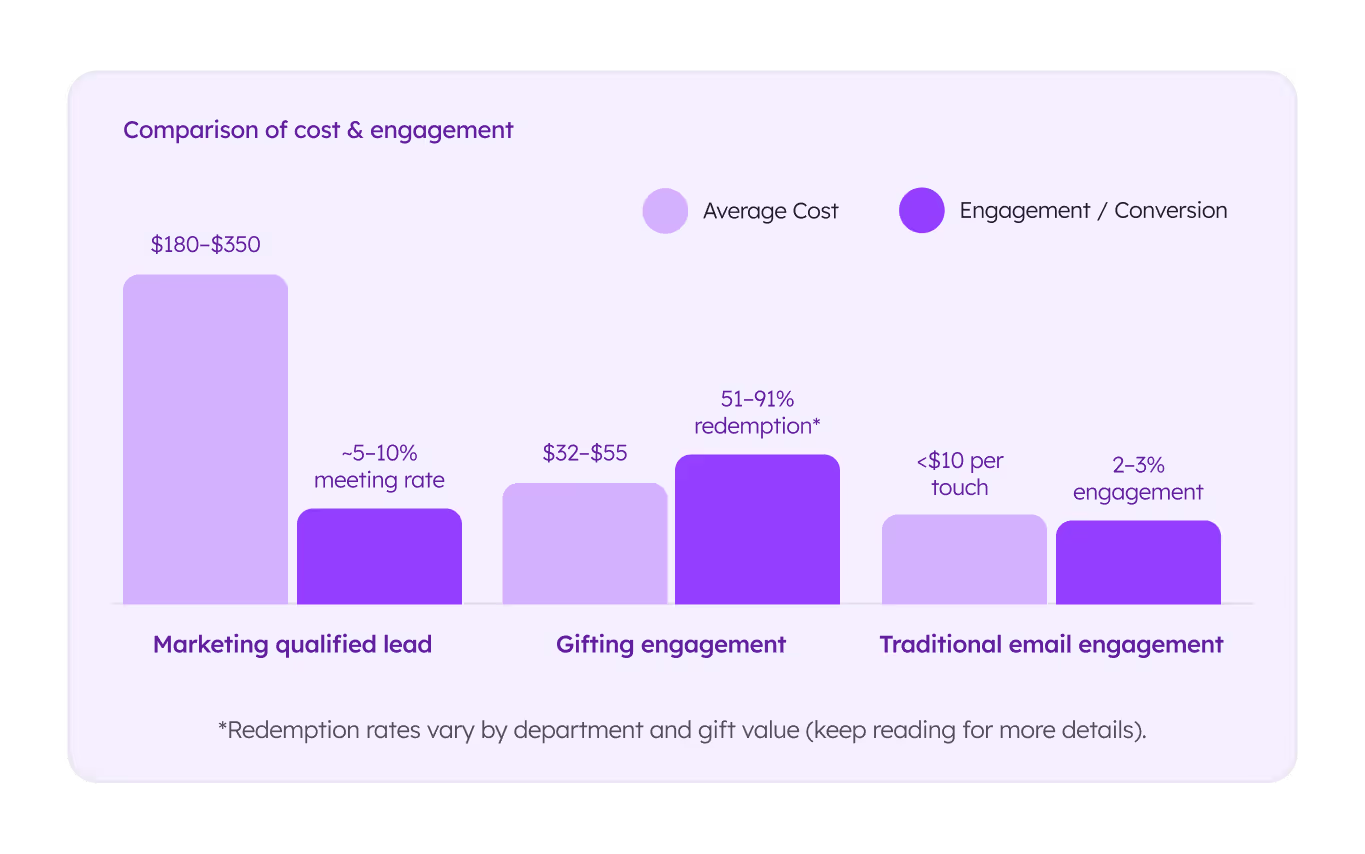
How to integrate corporate gifting into your brand strategy
Gifting isn't one-size-fits-all. Here's how to use it strategically across your go-to-market strategy:
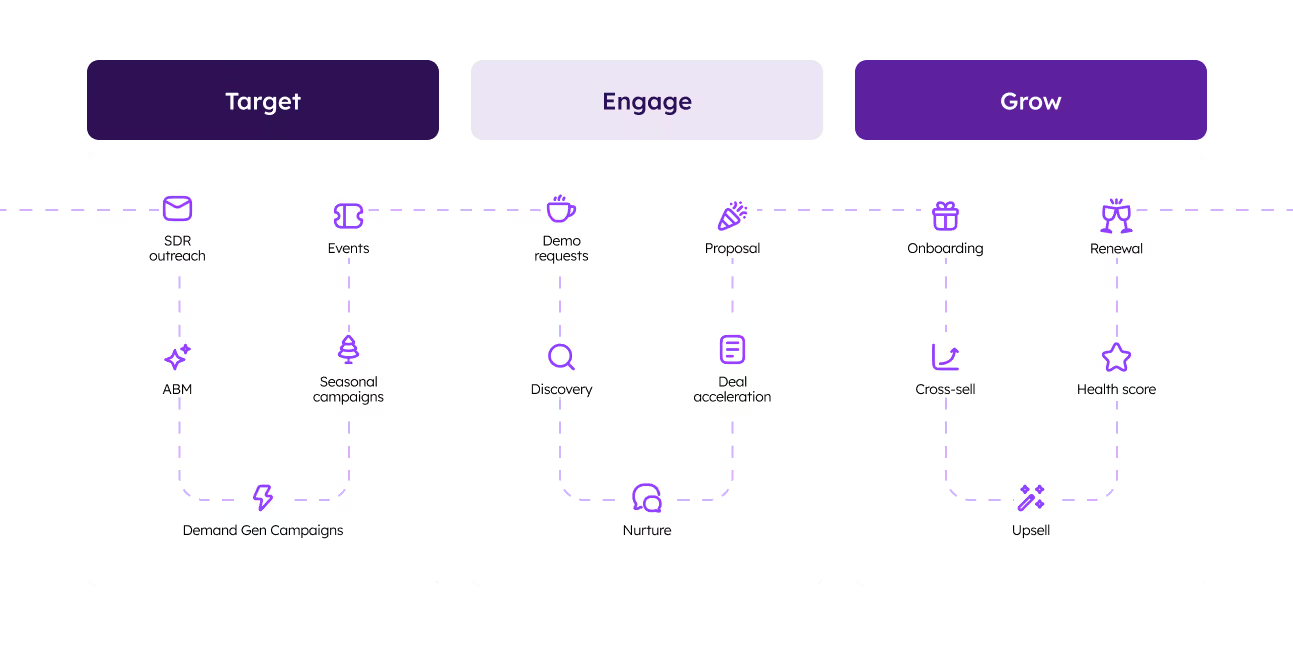
1. For brand awareness and account penetration:
When you’re trying to break into target accounts, a well-timed gift creates instant memorability. You’re not just another cold email; you’re the company that showed up with something worth paying attention to.
Start by identifying your top 50 target accounts and researching each contact, from LinkedIn updates to recent company news or personal interests. Intent data softwares like ZoomInfo, 6sense and Demandbase can be very helpful here.
Send personalized gifts that show you’ve done your homework: a coffee or lunch voucher for a busy exec, a desk plant for someone settling into a new role, or even a basketball shirt from their favorite team. Add a short, personalized note and a clear next step to spark conversation and build rapport.
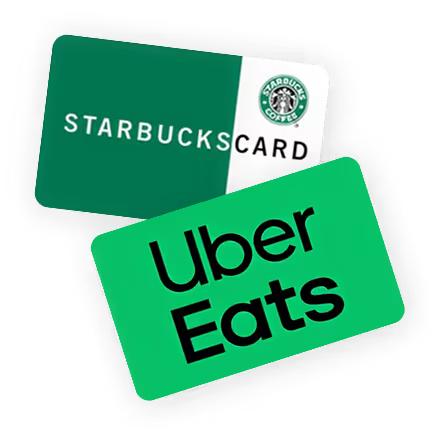
2. For pipeline acceleration:
When prospects are already in motion, personalized gifting can nudge deals forward. It’s a subtle yet powerful reminder that you’re invested in the relationship, not just the transaction.
Set up CRM triggers to flag opportunities when a deal has stalled, then send something that adds value to their decision-making process. That could be a book that aligns with their goals, a relevant industry report, or an experience they’d enjoy, like a spa kit or voucher. For a thoughtful twist, consider something they’ll use daily, such as a Lumi light set to brighten their workspace or a premium notebook and pen kit that keeps your brand top of mind. Follow up a few days later to reconnect and keep the conversation flowing.

3. For customer retention and advocacy:
Your existing customers are your best brand ambassadors, but only if they feel genuinely valued. Strategic gifting turns satisfied customers into vocal champions.
Map out key customer milestones in your CRM or customer advocacy platform, such as the first month, six months, one year, renewals, or expansion moments, and celebrate each one. Send a personalized trophy after a major project, or a batch of cookies for anniversaries, or a bottle of their favorite drink to mark a new rollout. During the holidays, surprise them with a cozy seasonal bundle or a personalized gift that reflects their company culture.
These gestures go a long way: 70% of customers feel valued when receiving a gift, and 61% have a more positive view of the brand afterward.
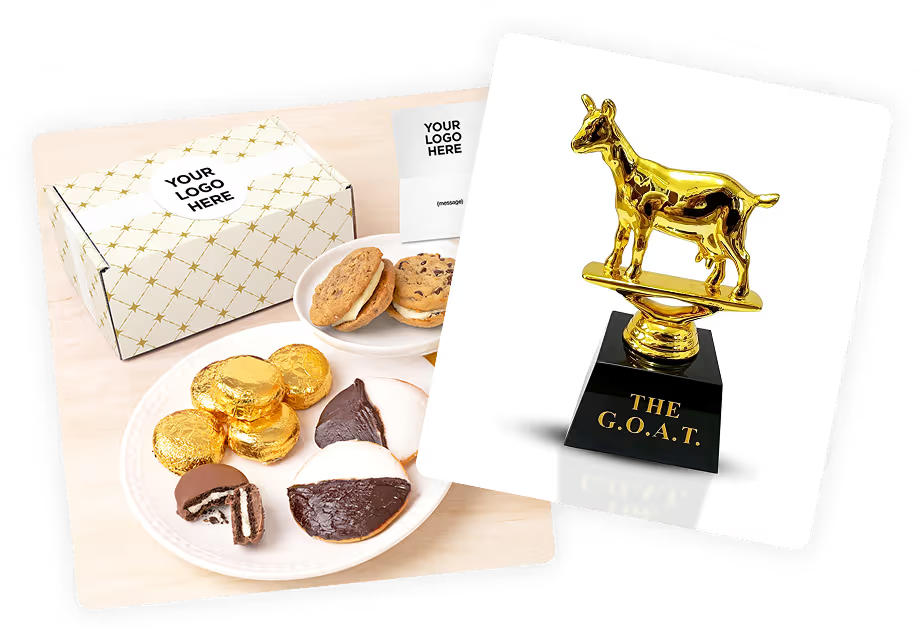
Building a brand-aligned corporate gifting program
The worst corporate gifts are generic. Logo-slapped water bottles. Forgettable t-shirts. Random gift cards with no thought behind them.
The best corporate gifts extend your brand identity. They reflect your values, your personality, your understanding of the recipient. They're items people actually want to keep, use, and remember.
Here's how to ensure your gifting feels like your brand:
- Choose gifts that reflect your brand values. If you're a sustainability-focused company, send eco-friendly items. If you're all about productivity, send tools that help people work better. Make the connection obvious.
- Invest in premium packaging. The unboxing experience matters. Branded packaging, thoughtful presentation, and attention to detail signal that you care about quality and experience.
- Personalize the message. Include a handwritten note or personalized card that connects the gift to something specific about the recipient. Generic messages waste the opportunity to build a real connection.
- Make it easy to redeem. If you're sending choice-based gifts or experiences, the redemption process should feel effortless. Any friction can kill engagement. Platforms like Reachdesk simplify this with features such as address confirmation, recipient choice, and automated campaigns that connect with your GTM stack in one click. This ensures gifts are seamless, arrive on time, and reach recipients at the perfect moment.
Start small, when launching a gifting program. Choose one segment (top prospects, new customers, or renewal opportunities). Design a gift that authentically represents your brand. Test it with 25-50 people. Measure open rates, response rates, and conversion outcomes. Refine and scale from there.
Brand campaign measurement: Tracking ROI and performance
Brand marketing gets a bad rap for being hard to measure. But when you're intentional about connecting brand activities to business outcomes, the data tells a clear story.
Essential brand marketing metrics you must track
Brand awareness metrics: Track branded search volume (how many people are searching for your company name), direct website traffic (people typing in your URL directly), and social media mentions and sentiment.
Engagement metrics: Monitor email open and click-through rates, content download rates, event attendance and participation, and webinar registration and attendance.
Pipeline influence metrics: Measure deals sourced from brand campaigns, sales cycle length (brand-aware prospects should close faster), win rates for brand-aware vs. cold prospects, and average deal size from branded campaigns.
Customer loyalty metrics: Track Net Promoter Score (NPS), customer retention rate, expansion revenue from existing customers, and customer referrals and testimonials.
Gifting campaign metrics: For gifting specifically, measure redemption rates, meeting acceptance rates after gift sends, pipeline generated from gifted accounts, and cost per engagement vs. traditional channels. Gifting solutions like Reachdesk, will sync directly with your CRM to provide this data based on every gift sent.
How to prove brand campaign ROI
Connect every brand campaign to a measurable business outcome. Don't just launch awareness campaigns. Launch campaigns that drive demo requests, trial signups, or sales conversations.
Use attribution tracking. Tag all links, track UTM parameters, and connect brand campaign touches to pipeline in your CRM. If someone engaged with a brand campaign and later converted, capture that data.
Run controlled tests. Pick similar audience segments. Run a brand campaign with one group, standard outreach with another. Compare conversion rates and ROI.
Calculate customer acquisition cost (CAC) by channel. If brand campaigns (especially those including gifting) generate qualified leads for $32 to $55 compared to $180 to $350 for traditional marketing, that's a clear ROI story.
To get started, set up a dashboard that tracks brand campaign performance. Include awareness metrics, engagement rates, pipeline influence, and ROI. Review it monthly and adjust your strategy based on what's working.
Creating an impactful brand campaign strategy: Your 30-day action plan
Ready to build brand campaigns that drive measurable results? Here's how to get started in the next 30 days:
Week 1: Audit and define
- Audit your current brand consistency across all channels
- Document your brand positioning, voice, and visual identity
- Identify gaps where your brand experience feels disconnected
- Define success metrics for your brand campaigns
Week 2: Plan your first campaign
- Choose one specific objective (awareness, pipeline acceleration, or customer advocacy)
- Select 2 to 3 channels to activate
- Create a content calendar with specific touchpoints
- Design assets that showcase your brand consistently
Week 3: Build your gifting strategy
- Identify which audience segment will receive gifts (top prospects, stalled deals, or key customers)
- Choose gifts that authentically reflect your brand values
- Write personalized messaging that connects the gift to your brand story
- Set up tracking mechanisms to measure impact
Week 4: Launch, measure, and optimize
- Launch your campaign across all selected channels
- Track engagement metrics daily
- Monitor pipeline impact weekly
- Collect feedback from recipients and internal teams
- Document what worked and what needs adjustment for the next campaign
Turning brand management into a growth engine
Strong brands don't just get noticed. They get remembered, recommended, and chosen repeatedly.
Building an unforgettable brand isn't about flashy campaigns or big budgets. It's about consistency, emotional connection, and showing up in ways that matter. It's about understanding that every touchpoint (digital or physical) is an opportunity to reinforce who you are and what you stand for.
When you integrate brand strategy across your entire GTM motion, something shifts. Demand generation gets easier. Sales cycles get shorter. Customer relationships get deeper. And yes, thoughtful corporate gifting becomes a multiplier that amplifies everything else you're doing.
The question isn't whether your brand matters. It's whether you're building campaigns that make it unforgettable.
Ready to create brand campaigns that people actually remember?
Discover how Reachdesk helps GTM teams build unforgettable brand experiences through strategic gifting. From account-based campaigns to customer advocacy programs, see how the best brands turn one-time interactions into lasting relationships.


